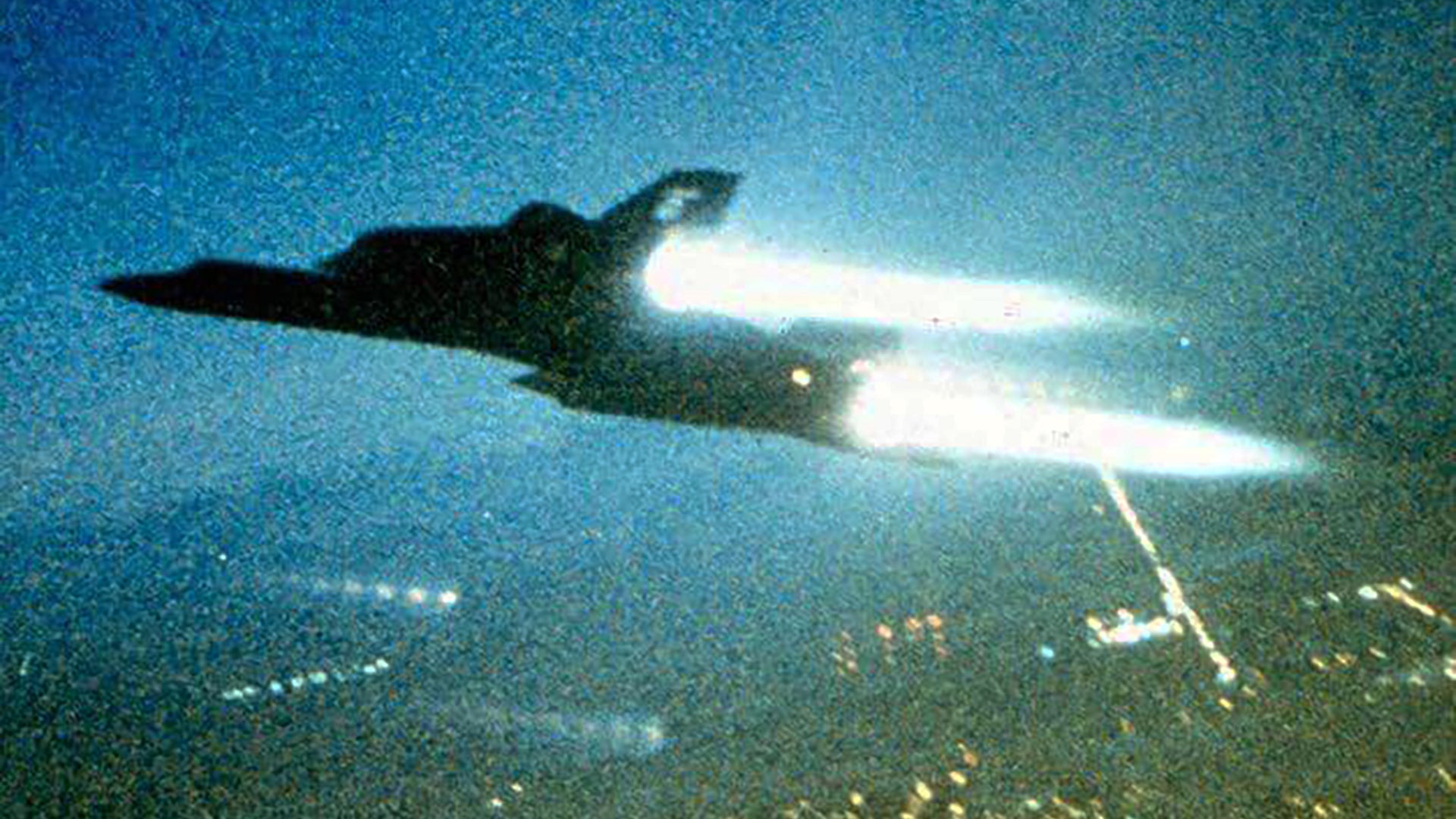The SR-71 Blackbird continues to capture the public’s imagination like no other aircraft on Earth even two decades after it was retired. Any new stories, video, pilot interviews, historical tidbit, or whatever about the jet are gobbled up like fine desserts by fans of the plane, or of just engineering, technology, and history, in general. Case in point the crazy photo above.
The image’s backstory is unknown, as far as I can tell (see update at the bottom of this post). It popped up in my Twitter feed after @Kobaz4 posted it and I retweeted it with what was probably pretty much everyone else’s reaction:
It shows a Blackbird with a Skunk Works tail-flash maneuvering relatively low over a populated area at twilight with full afterburner selected. The only way to capture such a shot was with high-speed, grainy film, but that quality actually adds to the photo’s mystique, in my opinion. Multiple SR-71’s wore the Skunk Works tail flash, so it is near impossible to understand what aircraft this was. Best guess was it was a test bird out of Palmdale towards the end of the SR-71’s career, but that is just a wild guess.
The Blackbird’s Pratt & Whitney J58 turbojet engines were one of the biggest triumphs of aerospace development in the history of manned flight. Their thrust wasn’t extreme by today’s standards—they put about the same amount in afterburner and in military power on the test stand as an F119 engine in an F-22—but they were specially designed to retain high thrust at extreme speeds beyond Mach 3 and very high altitudes, double that of what a fighter typically flew at. They also ran on special JP-7 fuel and were capable of burning special additives to create a stealthy cloud of plasma behind them to hide from enemy radars. All of this happened internally, of course, but one of the coolest byproducts of the J58’s operation was its huge afterburner plume that included a string of shock diamonds measuring dozens of feet trailing from behind the Blackbird’s barrel-like exhaust.


During the day, the Blackbird’s burners looked awesome, but at night, it turned the SR-71 into something that looked otherworldly. This is probably the best shot I have seen that captures this. In fact, it is probably the best photo that shows off the incredible thrust that made the “Sled” slide through the atmosphere like a hot knife through butter, ever.
UPDATE:
The highest time SR-71 pilot ever, BC Thomas, reached out to me about the photo. Here is its awesome backstory:
The photographer was Lt Col Bill Flanagan, taken from our SR-71 Flight Test T-38 chase plane #10363. Lt Col Tom Tilden was the T-38 pilot. I was the SR-71 pilot and my RSO was Lt Col JT Vida. The takeoff was from Air Force Plant 42 at Palmdale, CA, around 1986, with Palmdale in the background. Note the two small Mach diamond reflections, lower left, in the canopy of the T-38. The aircraft was #972, the SR-71 which graces the entrance to the Udvar-Hazy Center of the National Air and Space Museum at Dulles International Airport, and the aircraft which holds the world’s speed record coast-to-coast (Lt Cols Ed Yeilding and JT Vida crew).
So, there you go! We now know the origin of this amazing photograph.
You can read about one of BC’s most eventful SR-71 missions in this piece I published with him in 2016.
Contact the author: Tyler@thedrive.com
